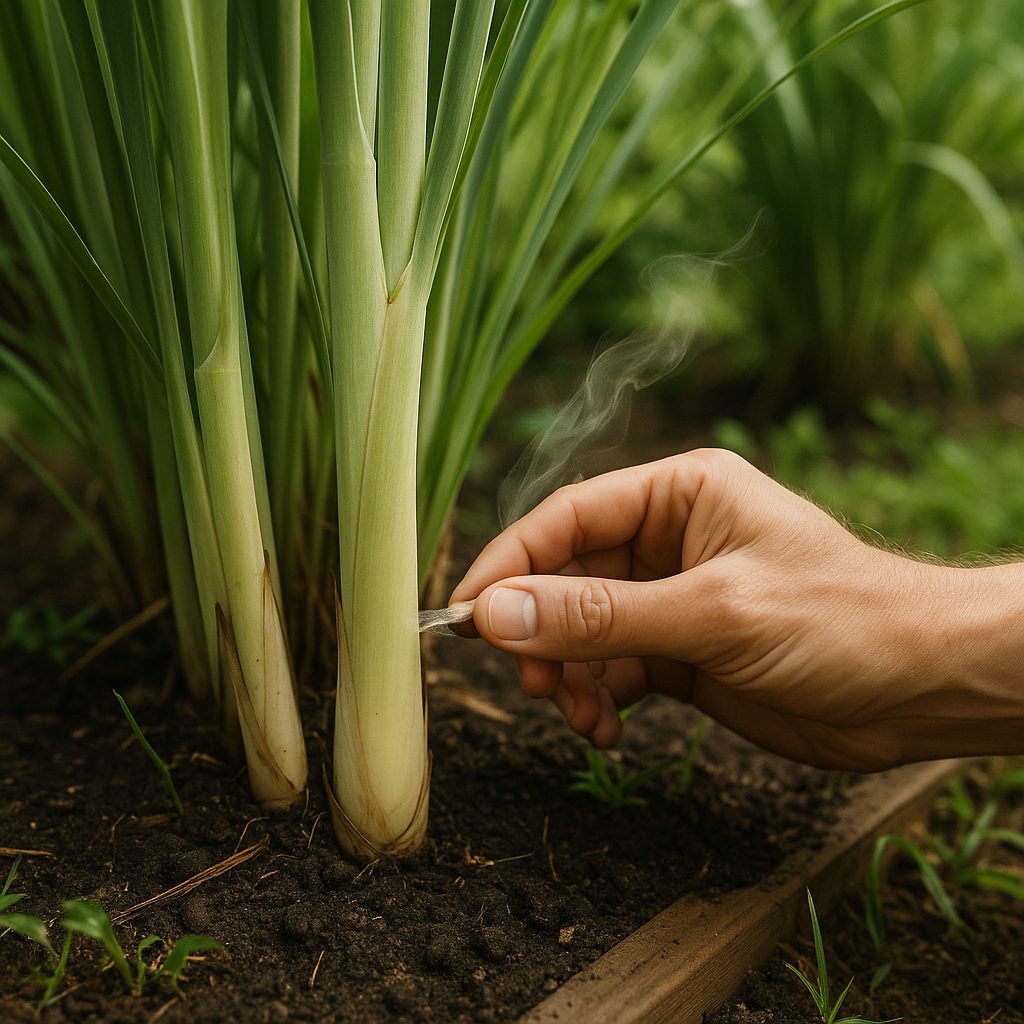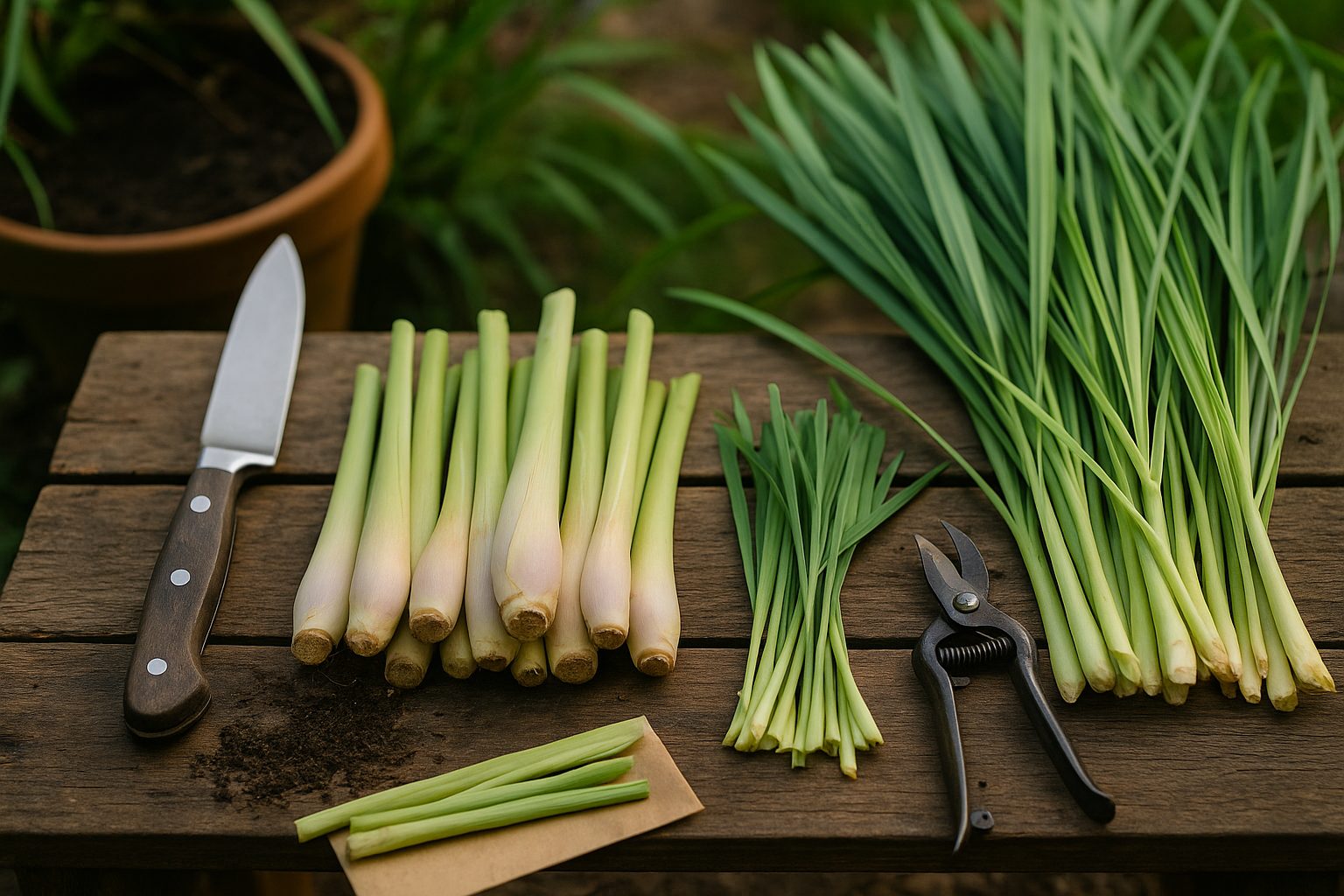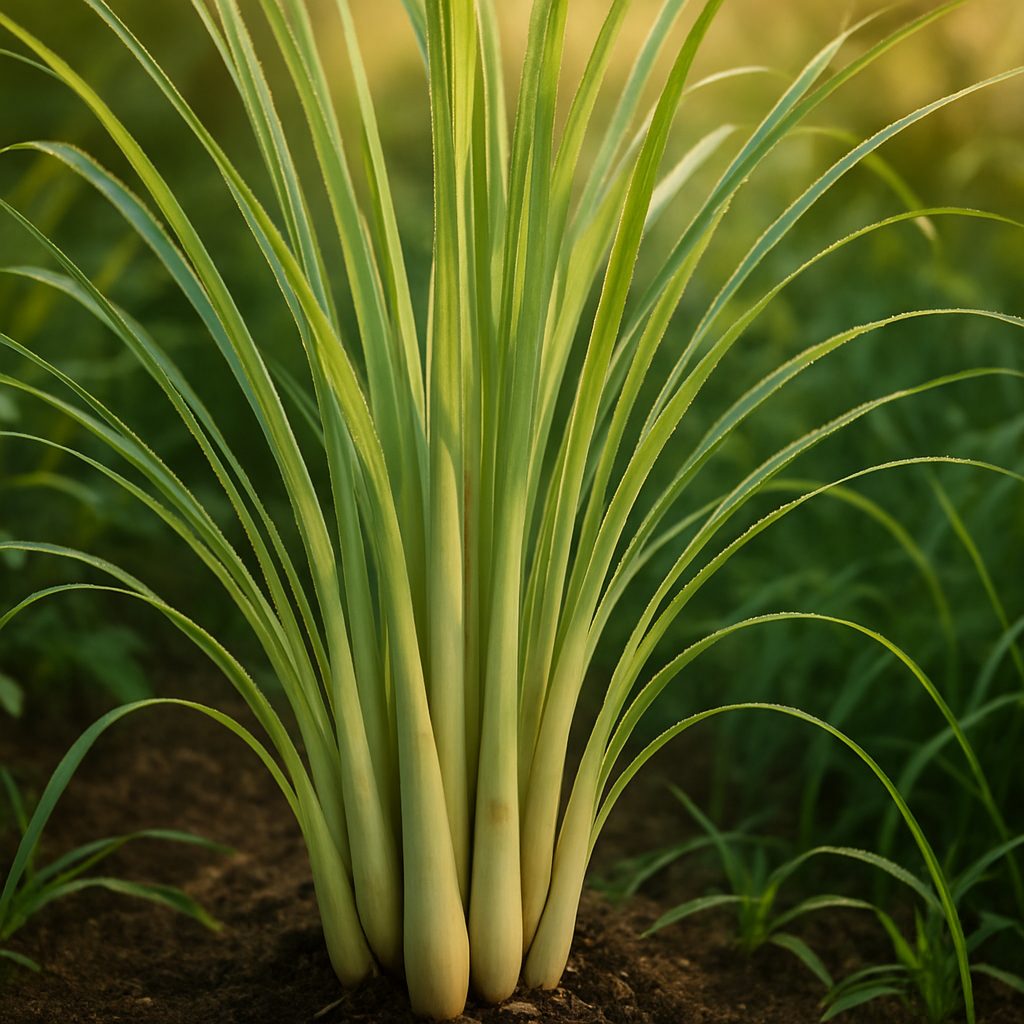When Is the Best Time to Harvest Lemongrass?

If you’ve ever wondered how to harvest lemongrass for the freshest flavor in your kitchen, timing is everything. Lemongrass grows in distinct stages, starting with tender shoots that gradually develop into thick, fragrant stalks. Typically, it takes about four to six months after planting for lemongrass stalks to reach full maturity.
The best time to harvest is when the stalks are at least half an inch thick and stand about a foot tall. Look for stalks with a firm, pale-green base; a mature lemongrass stalk will also release a strong lemony aroma when lightly scratched. Avoid harvesting thin or weak stems, as these haven’t yet developed the rich flavor you want.
Outdoor lemongrass thrives in warm seasons, so late summer to early fall is usually the prime window for harvesting. However, if you’re growing lemongrass indoors or in pots, the timing can shift. Indoor plants may mature more slowly, especially if sunlight is limited, so watch closely for the same visual and aromatic cues rather than just counting months.
If you love fresh, robust lemongrass in your recipes, snip stalks in the morning after dew has evaporated for optimal flavor and freshness.
How to Harvest Lemongrass Properly

Harvesting lemongrass properly ensures a continuous supply of fresh stalks while keeping your plants healthy and thriving. Start by identifying the right parts to harvest—the flavorful, aromatic portion is the thick, pale base of the stalk, usually found closest to the soil.
Look for mature stalks that are at least half an inch thick and around a foot tall, as these will have developed the most flavor without stressing the plant.
Using a clean, sharp knife or garden shears, cut the stalks as close to the base as possible, taking care not to yank or tear them, which could damage the root system. Only harvest a few stalks from each clump at a time, leaving the central growth and some outer stalks untouched; this allows younger shoots to mature and encourages healthy regrowth.
After harvesting, trim off the leafy tops—they can be saved for tea or stock—and rinse the stalks well before use. Always disinfect your cutting tools before and after each use to prevent disease, especially if you’re tending to multiple plants.
Regular harvesting not only provides fresh lemongrass for cooking but also stimulates your plants to produce more shoots, so plan to pick stalks every few weeks rather than all at once. With these steps, your lemongrass will stay lush and productive, offering a bounty for months to come.
Pruning and Cutback Tips for Year-Round Growth
Understanding the difference between harvesting stalks and routine pruning is key to keeping your plants thriving year-round. Harvesting stalks means snipping off mature, ready-to-use stems—for example, picking thick asparagus spears or cutting basil stems for cooking. In contrast, routine pruning involves trimming away dead, damaged, or overgrown branches to shape the plant and encourage new growth.
Both are important, but timing is everything:
- During the growing season, prune regularly to let light and air reach all parts of the plant, boosting its health and productivity.
- As the weather cools, especially in late fall, seasonal cutbacks are essential for perennial plants like roses and herbs. Trim back spent growth and remove any diseased foliage to prevent overwintering pests, but avoid cutting too aggressively; leaving some growth helps shield roots from the cold.
- For container plants, move them to sheltered spots and reduce watering after a trim.
Remember to use clean, sharp tools to prevent the spread of disease, and never remove more than one-third of the plant at once. By blending targeted harvesting with thoughtful pruning tailored to each season, you set your plants up for robust, year-round growth.
Preserving and Storing Your Lemongrass Harvest
To get the most out of your lemongrass harvest, start by cutting away the tough outer leaves and trimming the dry tops, leaving only the pale, tender stalks. Rinse them thoroughly to remove dirt or debris, then pat dry with a clean towel.
For short-term storage, wrap whole stalks in a damp paper towel and place them in a plastic bag. Store this in your refrigerator’s crisper drawer, where they’ll stay fresh for up to three weeks.
If you want to keep lemongrass longer, freezing works wonders: slice the cleaned stalks into sections, seal them in an airtight bag or container, and store them in the freezer. This preserves both flavor and aroma for several months.
Alternatively, you can dry lemongrass by thinly slicing the stalks and spreading them on a baking sheet in a warm, dry space or using a dehydrator. Once completely dry, store the pieces in an airtight jar away from light and moisture.
Remember, the key to maintaining lemongrass’s signature citrusy flavor is to minimize exposure to air and humidity. Always use sealed containers and keep your storage area cool. This ensures you’ll have vibrant, fragrant lemongrass for your recipes year-round.
How to Use Lemongrass in the Kitchen
Lemongrass is a versatile herb that adds a fresh, citrusy aroma to countless dishes, especially in Southeast Asian cooking. For savory soups, curries, and broths, peel away the tough outer layers of the stalk, then slice or bruise the tender inner core to release its essential oils. Try tossing a few pieces into chicken soup or a Thai coconut curry for an instant flavor boost.
If making tea, simply chop the stalk and simmer it in water with a slice of ginger for a soothing, aromatic drink. Don’t discard the leaves or fibrous parts; tie them together and let them steep in broths, rice, or even homemade syrups for a subtle flavor, then remove before serving.
Leftover bits can freshen up your kitchen by simmering them in a small pot of water on the stove, doubling as a natural air freshener. Always slice lemongrass thinly if eating it directly, as even the softer parts can be a bit chewy. With a little prep, lemongrass can turn simple recipes into something special.
Propagating Lemongrass for Continuous Harvest
Propagating lemongrass is simple and rewarding, giving you a steady supply for your kitchen. There are two easy methods: clump division and stalk cuttings.
Clump Division
For clump division, dig up an established lemongrass plant and gently pull apart the root ball, ensuring each section has a few healthy stalks and roots. Replant these divisions in pots or directly in the ground, spacing them about a foot apart.
Stalk Cuttings
Stalk cuttings are just as easy—choose fresh stalks with the bulb attached, trim off the leafy tops, and peel away the tough outer layers. Place the stalk bases in a glass of water on a sunny windowsill; roots usually sprout in one to two weeks. Once the roots are 1–2 inches long, plant the cuttings in well-draining soil. If starting directly in soil, keep it moist but not soggy until you see new growth.
Tips for Continuous Harvest
- Propagate lemongrass in early spring or late summer when temperatures are mild.
- Stagger new plantings every few months to ensure a continuous supply.
- Regularly trim the outer stalks for use, leaving the central core to regrow.
- Feed plants monthly with a balanced fertilizer to keep them productive all year.
Frequently Asked Questions about Harvesting Lemongrass
Many gardeners wonder how often to harvest lemongrass. The answer depends on your climate and the size of your plant. Generally, you can snip stalks every few weeks during the growing season once they reach at least a half-inch thick.
If you find the stalks are tough or woody, peel away the outer layers and use just the tender white core for cooking.
Those in warmer climates can harvest year-round, but in cooler areas, it’s best to cut stalks before the first frost and store extras in the freezer for later use. Regular harvesting encourages bushier, healthier plants.
